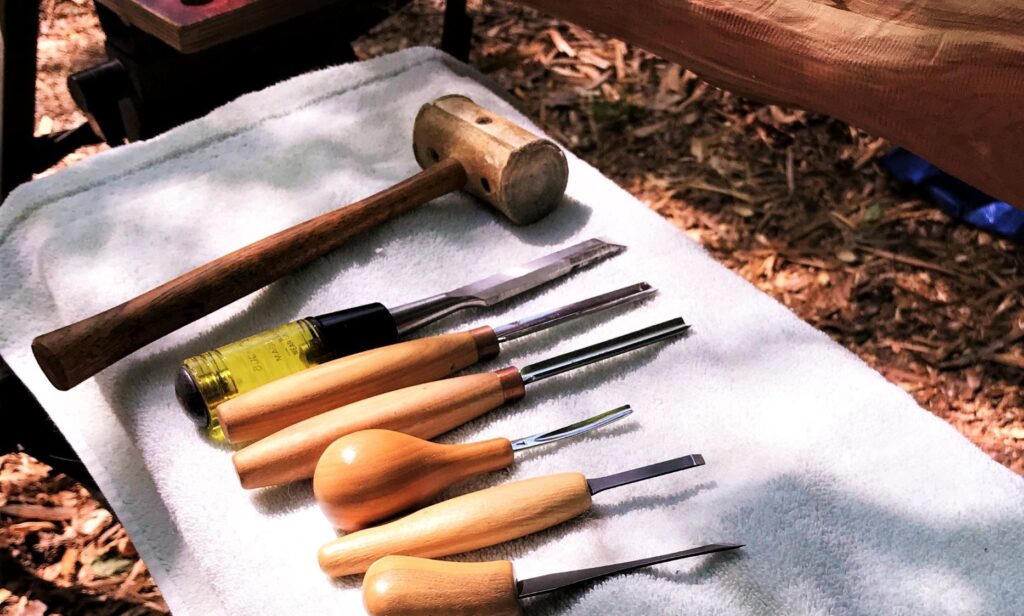
On a mild spring day six years ago, I was unexpectedly diagnosed with advanced thyroid cancer. Seven weeks later I underwent a seven hour surgery that removed not only the gland itself, but two of my four parathyroids and many lymph nodes. In the days afterwards, my remaining parathyroids, which help to regulate how the body processes calcium, refused to function, and I soon found myself back in the hospital, critically ill. Failing to respond to treatment, I slipped toward death. As my spirit hovered between this world and the next, the Norse goddess Freya claimed and healed me. I now serve the community as a shaman in thanks for Her gift.
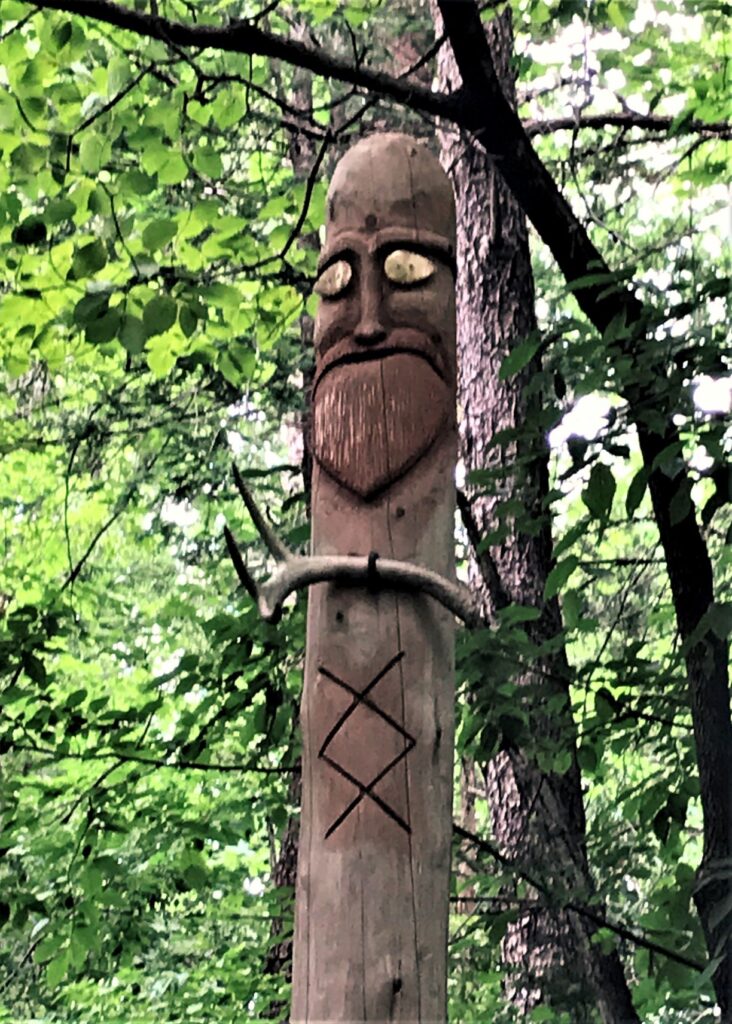
Shamanism is not a religion, but rather, a set of practices. Religiously speaking, I am a polytheist and a Heathen, worshiping the Gods and spirits of my Norse and Germanic ancestors. That word – Heathen – gets misused a lot, whether by Christians who use it pejoratively to mean “ignorant non-Christians” or by idiotic alt-right types who co-opt and twist our beliefs and values. God poles, simple wooden representations of deities, were common among Germanic, Slavic and Norse people, serving as focal points of reverence among people whose relationship with their Gods was shaped by the land and water around them. Here at TwoTrees, our godpoles frame the entrance to a small stone circle where we engage with the Holy Powers we revere, leave offerings, and celebrate the natural cycles.
Last summer, I felt called to carve and raise a votive pole to the Norse God Freyr, a fertility god associated with passion, agriculture, harvest and joyful sacrifice. This summer, I took on carving one for his twin sister, Freya, whose name means, “Lady”. Freya is a complex deity, associated with such disparate things as beauty, sexuality, magic, and self-worth: qualities the Norse deeply admired. Written tales speak of her falcon-feathered cloak, her cat-drawn chariot, and her great hall Sessrúmnir, in which she entertains those who have fallen in battle, of whom she has first choice. She is adept at seidr (magic) and barter, acquiring her fabled necklace Brisingamen from the Duergar (Dwarves.)
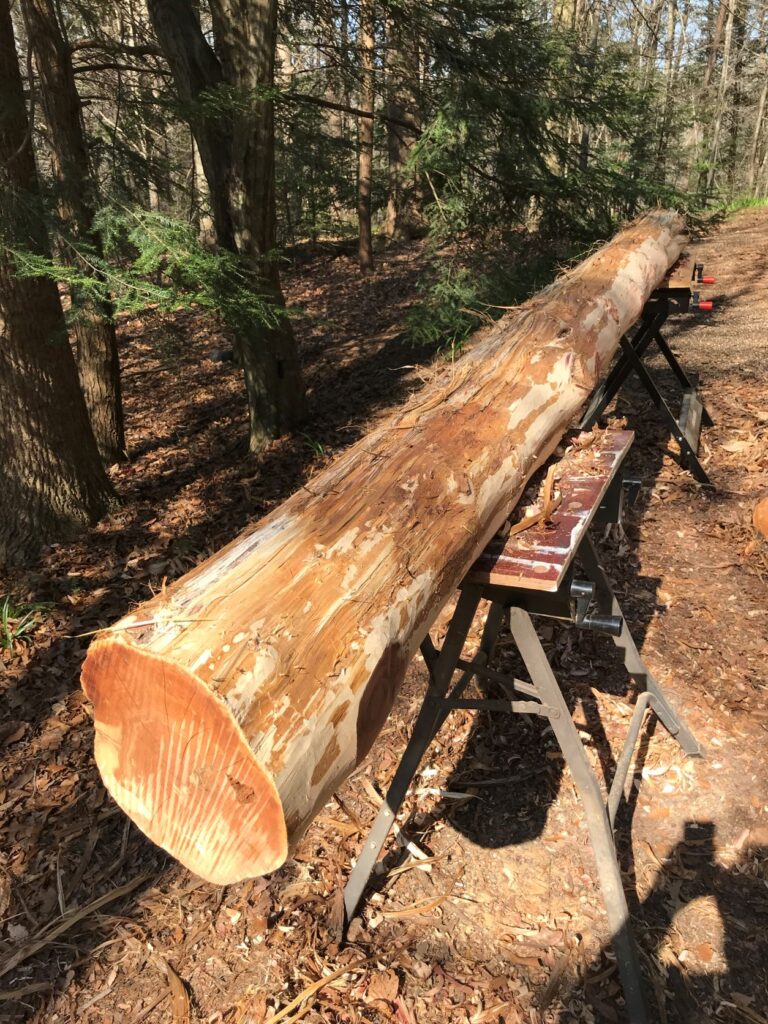
Freya’s pole began as a large cedar that my husband and I harvested with prayer and respect. I’d never before attempted carving something of that scale (the log was 14 inches in diameter and an easy 10 feet long) and the learning curve was steep. To set my intent, I began by carving the rune FEHU, long associated with Freya and associated with domestic prosperity. With wood carving, one slip of a razor-sharp chisel and you can cut away what would become the tip of a nose or chin – or your finger! Cedar isn’t as iron-hard as oak, but it has lots of knots where branches extended from the heartwood, places where the grain is tight and multi-directional. One must always consider the direction of the grain in wood and carve accordingly. The rosy, fragrant heartwood at the core of the tree has an outer layer of more spongy sapwood, as likely to shred as to shave away in paper-thin curls.
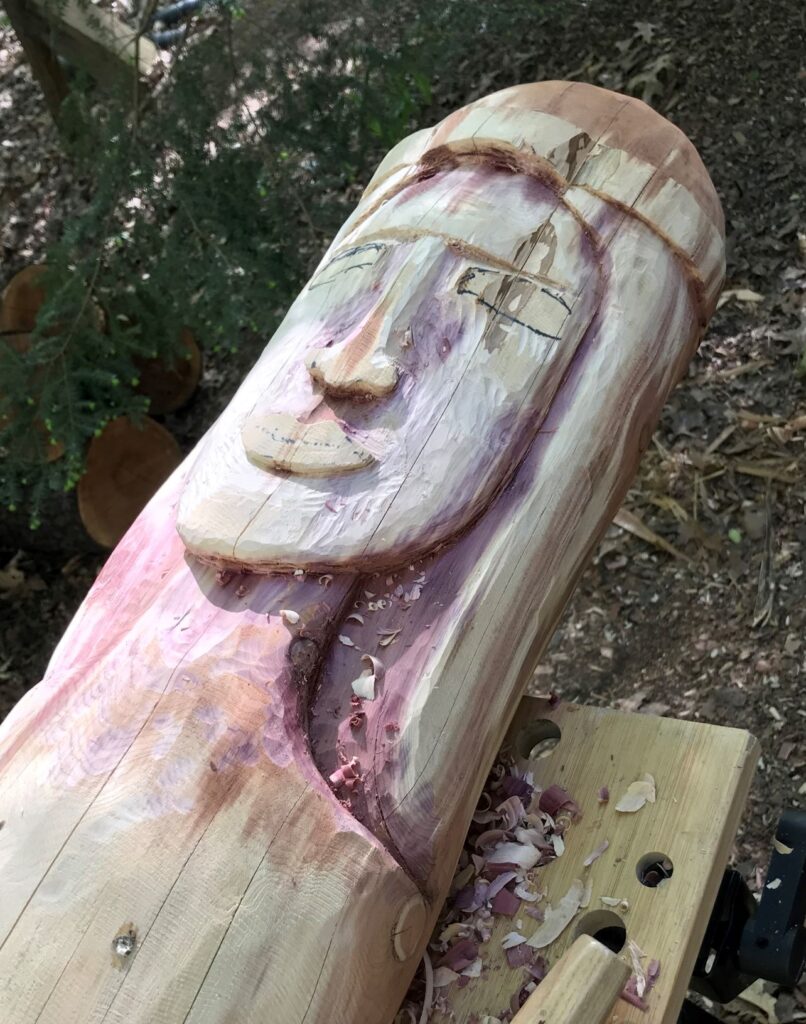
Most mornings, when the weather and my schedule allowed, I sharpened my gouges and chisels, a tedious process, and stepped outside to where the log rested in its cradles. I had no drawing or image to guide me. I rested my hands on the cool wood and prayed to Freya, giving thanks for my life and asking my Lady to guide me. It’s a common adage among wood carvers that you remove everything that isn’t the thing you’re trying to carve. In this case, I slowly revealed Freya’s face, sliver by sliver. The process required immense focus, care and deliberateness, making it an excellent meditation for an impulsive person like me. Natural cracks and knots dictated how her hair flowed and the shaping of her features. At no point could I study what I was doing straight on, as I had to carve from one side or the other, standing beside the pole. I also had no way to compensate for the visual foreshortening that would occur when the finished pole was raised. These considerations caused me to think about how we humans perceive our Gods, never straight on, but always through the biases and agendas of our humanity.
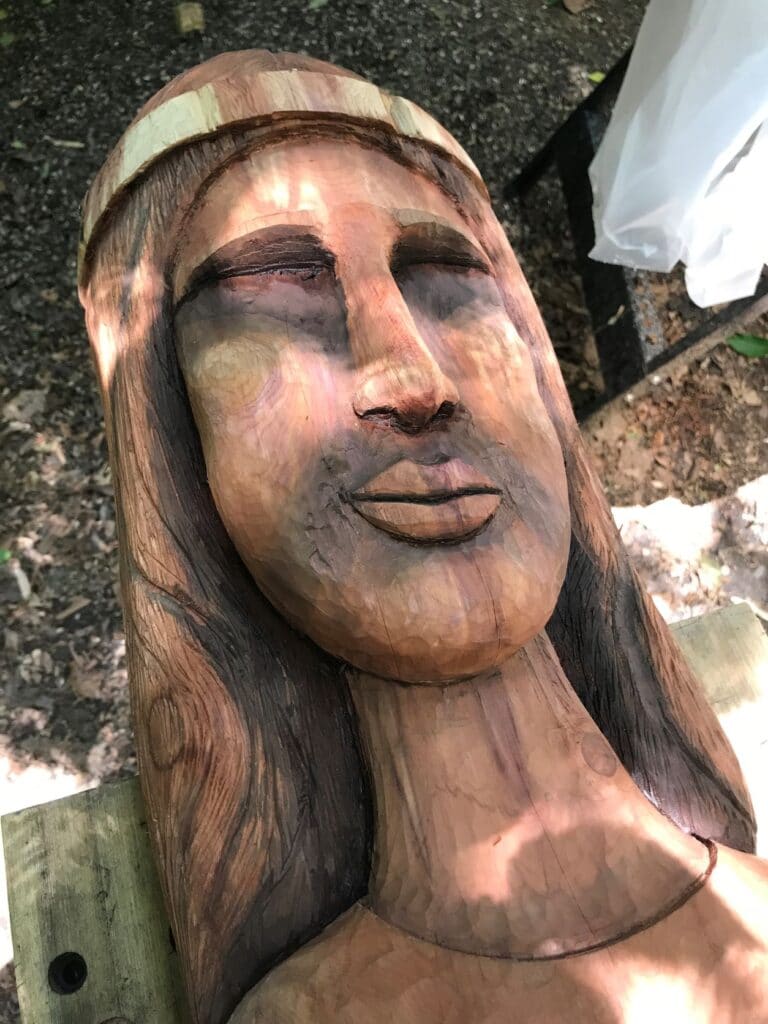
The day came when I realized that my carving was complete. I created a stain from finely ground red ocher, the earth pigment used by our Ancestors to stain such holy things as the bodies of their Dead, and charcoal, and applied layer after layer to provide additional dimension to the carving. Then I added brass decorative tacks to ornament the circlet resting on Freya’s head. Finally, I hung a triple strand of yellow, gold and green glass beads accented with a large amber heart around My Lady’s neck in representation of Her magical necklace, Brisingamen. The surface of the pole has a warm, leather-like texture from the disc sander I used to removed the bark and smooth the knots, while the breasts, shoulders, neck and face gleam from the sleek passes of sharp steel.
Last Saturday, we gathered with a few dear friends in celebration of the summer solstice. We hailed the Holy Powers, made offerings of milk, mead and first garden fruits, and the male-identified among us lifted Freya’s pole from the cradles and carried it down the sun-dappled path to rise proudly amidst the emerald boughs of maple, tulip poplar and hemlock. Tears gathered in my eyes as I offered my praise and thanks to the Goddess who saved my life. May my life ever be filled with creative challenges, beauty and fellowship.
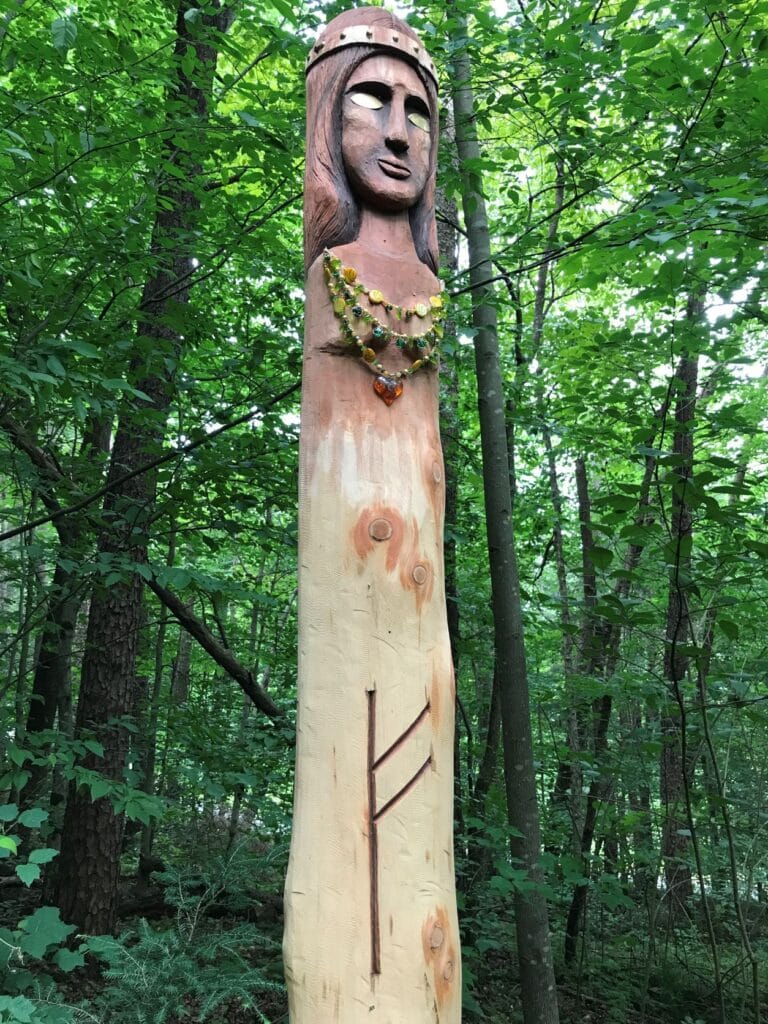
Invocation for Freya
Hail unto Thee, Vanadis,
Finest flower of the Vanir,
Both fierce and fair.
Fly You forth from Folkvangr,
To soar o’er shining Sessrumnir
Upon furled falcon’s wings.
Cat-Walker do I call Thee:
Honeyed One,
Mistress of seidr,
Magic’s master.
Through cunning craft
And passion’s art
You command that
Of which You are worthy.
Brísingamen’s Bearer,
You glow in gold and amber,
Proud and purposeful
Upon the field of battle
Or by the birthing bed.
Gather us up, we pray,
That we might feast forever
In your shining hall.
Susannah Ravenswing 2021